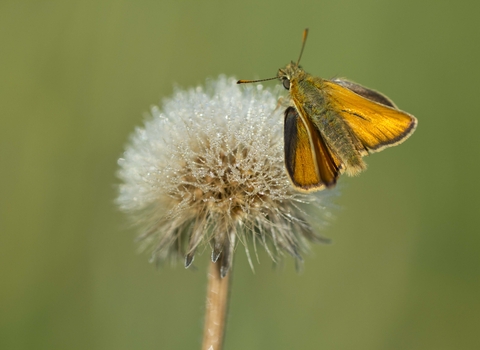
©Guy Edwardes/2020VISION
Small skipper
Often found basking on tall grasses, or buzzing between stems, the small skipper is a small, orange butterfly. It prefers rough grassland, verges and woodland edges.
Scientific name
Thymelicus sylvestrisWhen to see
June to AugustTop facts
About
The small skipper is a small, orange butterfly. Adults fly between June and August, feeding on knapweeds and thistles and hovering close to the ground. Small skippers can be found on rough grassland and sand dunes, along woodland edges and roadside verges, and anywhere else with plenty of grasses. They lay their eggs in grasses, close to the leaf node; the caterpillars feed almost exclusively on Yorkshire-fog, but can be found on other grasses like Cock's-foot.What to look for
The small skipper is russet-brown above, with a dark border and pale fringe to the wing edges. Smaller and plainer than the large skipper, it can be distinguished from the very similar Essex skipper by the brown tips on its antennae - the Essex Skipper has black tips.Where to find
Widespread across England and Wales.Did you know?
Small skipper caterpillars hatch in late summer. They eat their own eggshell and then go into hibernation within the grass sheath where they emerged. They come out again the following spring, ready to feed and metamorphose.Watch
Small skipper (https://vimeo.com/478443408)
Small skipper ©Tom Hibbert
